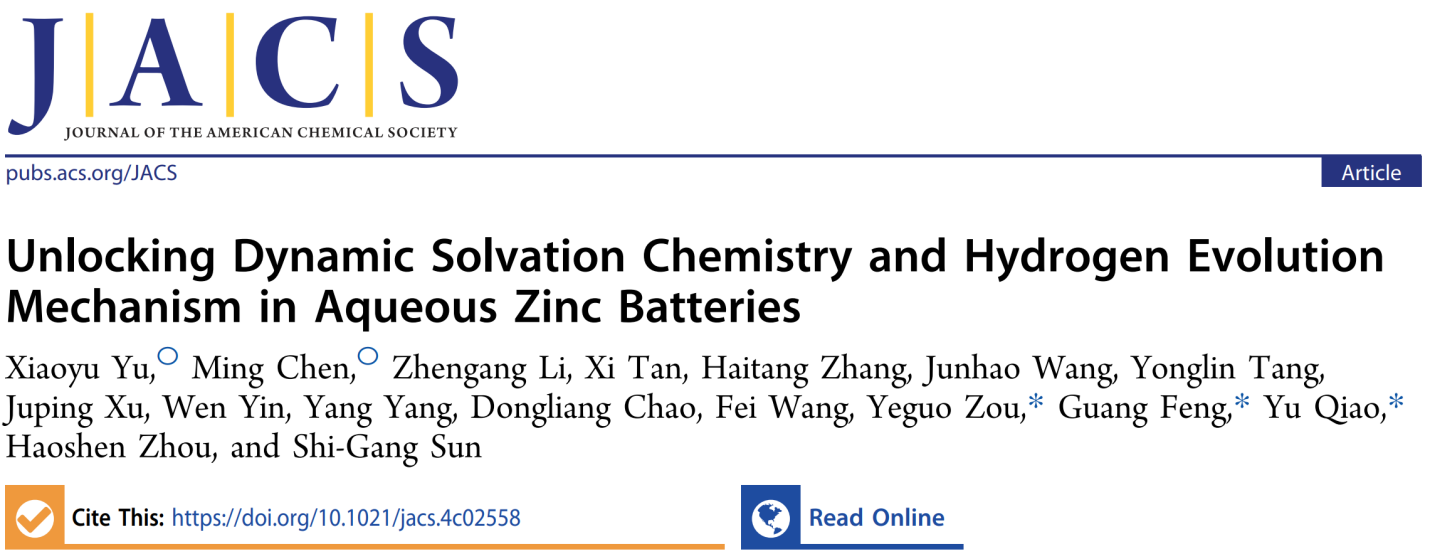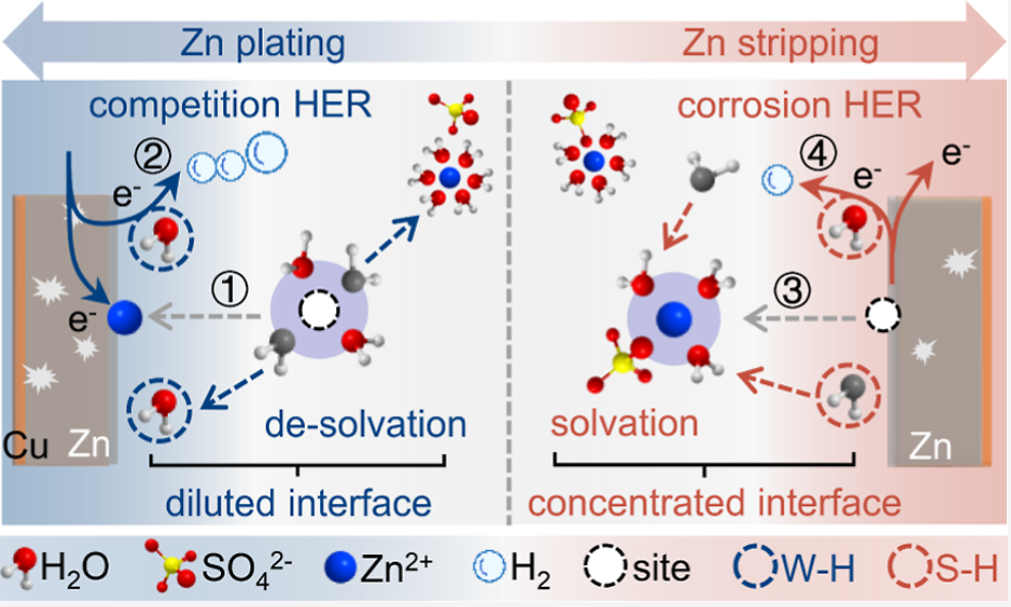Feng Guang’s team publishes a paper about aqueous zinc batteries in JACS
On June 13, Journal of the American Chemical Society published the R&D results of aqueous zinc batteries, the latest cooperative achievements by Professor Feng Guang's team and Professor Qiao Yu and Dr. Zou Yeguo of Academician Sun Shigang's team of the School of Chemistry and Chemical Engineering of Xiamen University.


Abstract: Understanding the interfacial hydrogen evolution reaction (HER) is crucial to regulate the electrochemical behavior in aqueous zinc batteries. However, the mechanism of HER related to solvation chemistry remains elusive, especially the time-dependent dynamic evolution of the hydrogen bond (H-bond) under an electric field. Herein, we combine in situ spectroscopy with molecular dynamics simulation to unravel the dynamic evolution of the interfacial solvation structure. We find two critical change processes involving Zn-electroplating/stripping, including the initial electric double layer establishment to form an H2O-rich interface (abrupt change) and the subsequent dynamic evolution of an H-bond (gradual change). Moreover, the number of H-bonds increases, and their strength weakens in comparison with the bulk electrolyte under bias potential during Zn2+ desolvation, forming a diluted interface, resulting in massive hydrogen production. On the contrary, a concentrated interface (H-bond number decreases and strength enhances) is formed and produces a small amount of hydrogen during Zn2+ solvation. The insights on the above results contribute to deciphering the H-bond evolution with competition/corrosion HER during Zn-electroplating/stripping and clarifying the essence of electrochemical window widened and HER suppression by high concentration. This work presents a new strategy for aqueous electrolyte regulation by benchmarking the abrupt change of the interfacial state under an electric field as a zinc performance-enhancement criterion.




